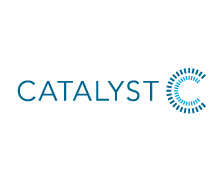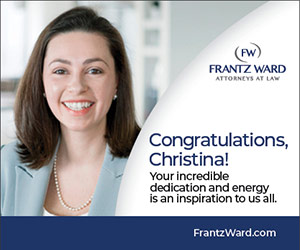by Catalyst
Women consistently identify several barriers which impact their ability to move ahead: lack of mentors and role models; exclusion from informal networks; stereotypes about their desires and abilities; and a work culture that does not support them. Many employee groups—people of color, gay and lesbian employees, disabled employees, among otherswho are not well represented in the inherent power structure of most large organizations experience similar difficulties. Employee networks have arisen as a tangible means to counter these effects. They provide a source of mentors, role models, and sponsors as well as access to information about opportunities and advancement. Networks can also play a role in busting the myths and stereotypes that surround diverse groups and in so doing help transform the culture of an organization.
What is a network?
A network is a group of people from a particular constituency (i.e, female, African-American, gay/lesbian, Gen-X, etc.) within an organization, formed to act as a resource for both members and the organization. Often networks begin as informal gatherings of like people and develop into formalized networking groups. Organizations may support networks in many ways—through administrative and budgetary support, permission to meet on organization time and premises, technological services (establishing an intranet or list serve) and, perhaps most importantly, leadership commitment.
Who benefits from networks?
Of course, by definition, employee networks provide the opportunity to build relationships and to network, often providing a way to connect employees who may be in small numbers in different parts of the company. Networks often help employees build skills that help them better deliver in their jobs and more effectively manage their careers. Other benefits for network members include:
- Finding/becoming mentors making informal connections and building relationships
- Identifying leaders and role models for more junior group members in the organization
- Reducing a sense of isolation often a strong benefit for people of color in organizations
- Learning about opportunities and strategies for advancement
- Providing events or other programs designed to expand knowledge and skills
- Increasing the number of contacts in personal networks through meeting and sharing information.
Network leaders get opportunities to develop their leadership skills and gain visibility with senior management by working with executive sponsors and diversity councils. They are also able to make connections that would be beyond the context of their regular work. Within the organization, a network can play various beneficial roles:
- Forum for building key relationships and sharing career development information
- Advisory body to management on issues relating to the constituent group
- Platform for leadership and visibility opportunities for members
- Resource for business development.
Networks can partner with the organization in recruiting and retaining valuable employees. They can be critical to changing the culture for the better and creating an environment that supports diversity of background, thought, and perspective. They can provide a constructive forum for feedback and help to improve the lines of communication. Networks can also help organizations to develop and keep clients: they provide a means for employees to forge relationships with community organizations and to favorably impact the perception of the employer.
Finally, perhaps the greatest impact of employee networks is mutually beneficial to their members and their parent organizations: helping to identify and to retain talent. Networks help employees succeed and feel like they belong, thus convincing them to stay with an organization.
What makes networks successful?
Through our work with networks, Catalyst knows what works and why. Here are some success factors to keep in mind as you begin, maintain, or rejuvenate an employee network. A clearly articulated business case answers the question, Why have a network? A business case is formed by distilling the following information:
- the demographics of the employee group at key levels within the organization
- the demographics of the client base including market trends and purchasing power
- feedback on the internal environment through avenues such as focus group data or survey data
- benchmarking information against competing and/or best-in-class organizations.
It is important for the network to articulate how both members and the organization will benefit. Often the business case is developed in collaboration with HR and line leaders so that the network is aligned with business needs and its value is clearly communicated and understood.
The most important success factors for networks are understanding and meeting member needs. In collecting information about potential member issues and interests, the goal is to narrow the broad array of possibilities and hone in on where your network group wants to focus and have impact. Network leaders must understand the scope and be very clear about what the network is and is not.
Diversity in leadership says a lot, so it is important that the network leadership team is reflective of—or maps to—the targeted membership. For example, if the network is targeting women at multiple levels, the network leader team should have women at several key levels represented.
Sometimes employee networks struggle to obtain the participation of particular employee groups. Ensuring that the key targeted groups have representation on the network leadership team can help to mitigate this challenge.
Well-managed communication is critical to a network’s success as well as its survival. Network leaders must share their vision and help active members and the organization at large understand why their work is important. They must celebrate the hard work of network leaders, champions, and members, as well as the accomplishments of the network. When it comes to communicating about events, they should be clear on the purpose, the target audience, and the intended benefits.
Like most organizational initiatives, networks are most successful when they have support from the top. Executive sponsors can support networks by sending out network event invitations through their e-mail; participating in events, including speaking on panels; giving guidance on the network’s plans and goals; providing funding for network activities; and giving updates about the network’s activities at leadership meetings. It is important to do a periodic evaluation of what is or is not working.
It is also important for the organization and network leaders to follow up with network members to make sure their changing needs and concerns are understood, as well as to learn from their ideas and suggestions. Catalyst advises conducting an annual or bi-annual survey to keep network leaders in touch with member priorities and needs.
Networks are another tool—a highly effective, fresh, and innovative tool—for improving the bottom line while bringing employees together to help each other and the organization get ahead. Success can be significant for the network organizer, colleagues, and the company, and each step is relatively simple. Regardless of how much time is available, employee networks can be successful if goals and activities tailored to distinct needs and environments are chosen—and enough like-minded people are found to help.
This Catalyst article was featured on page 51 in the Jan/Feb 2005 issue of Profiles in Diversity Journal







